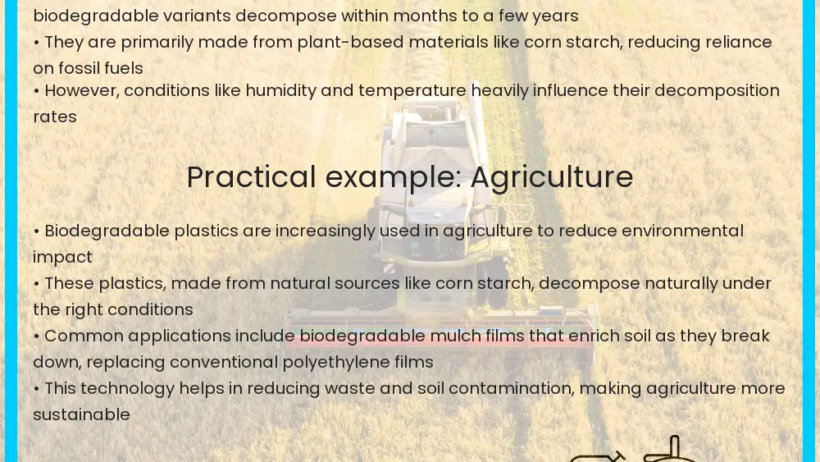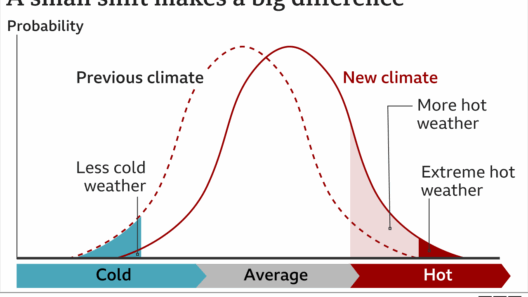As the world teeters on the precipice of environmental crisis, the conversation surrounding plastic usage has intensified. Traditional plastics, derived from fossil fuels, contribute significantly to greenhouse gas emissions and the inexorable degradation of our planet. In response to this existential threat, biodegradable plastics and products present a promising paradigm shift. They not only aspire to alleviate the accumulation of plastic waste but also harbor the potential for synergistic benefits in mitigating global warming.
Biodegradable plastics, as the nomenclature suggests, are designed to decompose more readily than their conventional counterparts. They typically fall into two categories: those that are derived from renewable biomass sources, such as corn starch or sugarcane, known as bioplastics, and those that have been engineered to break down through chemical processes. The material innovation has surged in tandem with escalating concerns over climate change, fostering alternatives that might hold the key to preserving ecological integrity.
At the heart of biodegradable plastic technology lies its unique capability to decompose under specific environmental conditions within a shorter time frame compared to traditional plastics. Conventional plastics can persist in landfills for centuries, releasing toxic substances and exacerbating ecological dilemmas. Conversely, biodegradable alternatives possess an intrinsic lifecycle that transforms them into benign materials, thereby effectively addressing the pressing issue of waste accumulation.
One primary method through which biodegradable plastics can help reduce global warming is by attenuating reliance on fossil fuels. The production of conventional plastics involves the extraction and refinement of petroleum, processes that are notoriously energy-intensive and carbon-intensive. In contrast, biodegradable plastics leverage renewable resources, which can engender lower carbon emissions throughout their lifecycle. By opting for materials that harness the sun, rain, and soil, society can veer away from the vicious cycle of fossil fuel dependence.
Additionally, the integration of biodegradable plastics into various industries can catalyze a revolution in waste management. Conventional waste disposal methods, such as landfilling and incineration, not only release greenhouse gases but also squander energy. By introducing biodegradable alternatives, waste can be diverted toward composting facilities, where the decomposition process can harness anaerobic digestion to convert organic materials into energy, while simultaneously reducing harmful emissions. This approach aligns seamlessly with circular economy principles, wherein waste is reimagined as a valuable resource.
Moreover, the agricultural sector stands to benefit remarkably from biodegradable plastics. Agricultural films made from biodegradable materials can fulfill functional roles—like pest control and moisture retention—while also decomposing post-harvest. This encapsulation of nutrients in the soil can enhance soil health, bolster crop yields, and reduce the need for synthetic fertilizers, which are often derived from fossil fuels and contribute to greenhouse gas emissions. Such innovations can foster sustainable agricultural practices, essential for feeding a growing global population while mitigating climate impacts.
However, the narrative of biodegradable plastics is not devoid of challenges. The production processes and raw materials used to create biodegradable plastics must be scrutinized to ensure that they do not lead to unintended consequences in land use or biodiversity. For instance, diverting crops from food production to create bioplastics can exacerbate food scarcity and drive up prices. It is critical to strike a balance between innovation and ecological stewardship, ensuring that the transition toward biodegradable materials does not come at the cost of food security or natural ecosystems.
Furthermore, public awareness and education regarding the proper disposal of biodegradable plastics are paramount. Misconceptions surrounding their degradation in conventional landfills persist, and for biodegradable plastics to be effective, they must be disposed of correctly. Initiatives aiming to educate consumers can help avoid the common pitfalls associated with their disposal, thus ensuring their full environmental potential is realized.
In a broader context, the adoption of biodegradable plastics can serve as a springboard for exploring ancillary sustainable innovations. This includes fostering a culture of environmental mindfulness within society. As biodegradable products infiltrate the marketplace, they can cultivate a consciousness regarding sustainability and responsible consumption. The shift in consumer preferences can pressure industries to adopt greener practices, amplifying the positive impacts of biodegradable alternatives well beyond their immediate applications.
Finally, it is crucial to acknowledge the role of policy in catalyzing the transition to biodegradable materials. Governments worldwide are beginning to recognize the urgency associated with climate change, and frameworks that incentivize the production and use of biodegradable plastics can propel the momentum forward. Forward-thinking legislation that supports research and development in this field can unlock the potential for advancements in material science and sustainable practices.
As society contemplates solutions to the climate emergency, biodegradable plastics emerge not merely as a panacea, but as a cog in the intricate machinery of sustainability. These alternatives provide an opportunity to reimagine our relationship with materials, offering tantalizing prospects for mitigating climate change. In the crucible of our environmental crisis, biodegradable plastics invite a reappraisal of ingenuity, responsibility, and innovation. By delving deeper into this frontier, we begin to grasp the intricate tapestry of possibilities that lie ahead—a future where materials are not just consumed, but harmonized within the natural order of our planet.







